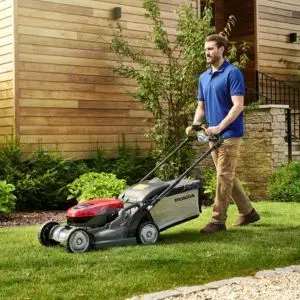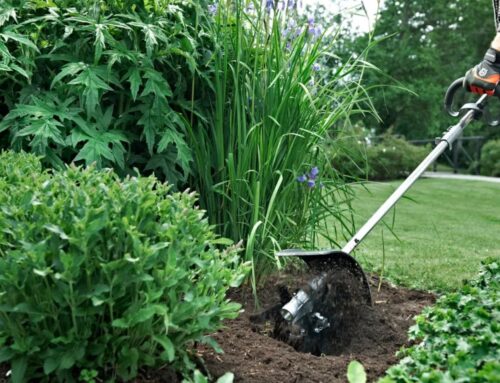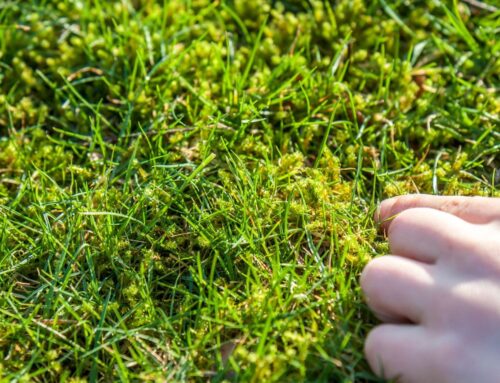
When to Sharpen a Lawnmower Blade and How to Do It
If you take pride in your lawn, few things are more frustrating than a patchy, torn finish after mowing—especially when you’ve put in a lot of time and effort to get it just so. Often, the culprit isn’t your technique or mower’s power but something much simpler: blunt blades. Whether you’re using a rotary or cylinder model, keeping your blades sharp is one of the most crucial aspects of lawn care.
Here, we reveal how often to sharpen mower blades and the telltale signs they need sharpening. We then explain how to go about this task and what mower blades sharpening tools you’ll require. After that, we look at why the cylinder mower blade sharpener process is different to that of rotary mowers. Finally, we explore why it pays to stay on top of blade maintenance and when it’s time to invest in replacement blades.
How Often Should Lawnmower Blades Be Sharpened?
 As a general rule, you need to sharpen mower blades on mowers every 20 to 25 hours of use. That may not sound like much, but it adds up surprisingly quickly. For homeowners with large lawns or those mowing weekly during peak season, this could mean sharpening blades more than once a year.
As a general rule, you need to sharpen mower blades on mowers every 20 to 25 hours of use. That may not sound like much, but it adds up surprisingly quickly. For homeowners with large lawns or those mowing weekly during peak season, this could mean sharpening blades more than once a year.
A simple way to keep track is to divide the 20–25 hours by the time it takes you to complete one mow. So, if it takes an hour, you’ll need to sharpen your blade after every 20–25 mows. If it takes 30 minutes, aim to sharpen after every 40–50 sessions, and so on. For convenience, many people keep a spare blade handy for a mid-season swap—saving time and ensuring a consistently sharp cut.
It’s also wise to sharpen your blade at the beginning of each mowing season. This way, you’re starting with a clean edge before grass growth kicks into gear.
 Signs Your Lawnmower Blades Need Sharpening
Signs Your Lawnmower Blades Need Sharpening
You don’t always have to count hours spent mowing. Your lawn will tell you when it’s time to use a blade sharpener for mowers or replace your mower’s blades. Some of the clearest signs include ragged or frayed grass tips that brown after mowing, uneven cuts where some areas are taller than others, and grass that clumps instead of being evenly dispersed. You might also notice that your mower is working harder, getting bogged down, or using more fuel than normal. Unusual vibrations or excessive noise can also point to dull or unbalanced blades that need attention.
The Best Way to Sharpen Mower Blades
Whether you’re using a specialist lawnmower blade sharpener, grinder, or simple file, the process is largely the same. Always prioritise safety and follow these basic steps:
1) Disconnect Power
For petrol mowers, unplug the spark plug. If you have an electric model, disconnect the mains cable, and for cordless versions, remove the battery.
2) Remove the Blade
 Tilt petrol mowers with the air filter facing upwards to avoid oil leaking into it. Use a socket wrench to loosen the blade bolt (they’re right-hand threaded). Use gloves for protection, and a block of wood as a wedge if you need to stop the blade from turning.
Tilt petrol mowers with the air filter facing upwards to avoid oil leaking into it. Use a socket wrench to loosen the blade bolt (they’re right-hand threaded). Use gloves for protection, and a block of wood as a wedge if you need to stop the blade from turning.
3) Clean and Inspect
Use a wire brush to remove any grass or debris. If the blade is cracked or deeply nicked, do not attempt to sharpen it—replace it.
4) Lawn Mower Blade Sharpening Tools
Clamp the blade in a vice. Using your chosen tool—be it a file, grinder, or specialist lawnmower blade sharpening tool—sharpen along the existing bevel (usually 30°). Move in one direction only. A lawn mower sharpening tool makes this process quicker and more accurate.
5) Balancing Mower Blades
After sharpening, check the blade’s balance using a lawnmower blade balancing tool. Balancing a mower blade is vital. An unbalanced blade causes vibration, reduces cut quality, and can damage the motor. If not in balance, remove more metal from the heavier side until the blade sits level.
6) Refit the Blade
Reattach the blade securely, ensuring all bolts are tight. Reconnect the power and test the mower.
Why Is Sharpening a Cylinder Mower Blade Different?
 Cylinder mowers are a different breed. They cut like scissors, with the rotating cylinder blades slicing against a fixed bottom plate. This results in a beautifully clean cut, but it also means precision sharpening is essential.
Cylinder mowers are a different breed. They cut like scissors, with the rotating cylinder blades slicing against a fixed bottom plate. This results in a beautifully clean cut, but it also means precision sharpening is essential.
Cylinder mower sharpening is not like the rotary lawn mower blade sharpener process described above. It is carried out by a process called grinding, which involves using professional equipment to straighten the blade and recreate a sharp edge. If alignment is off or the blades become blemished, a DIY attempt can make things worse.
That said, you can temporarily sharpen a cylinder blade using backlapping—a method that uses grinding paste and reverse spinning to refine the blade edges. You can find out more about this mower cylinder sharpening process courtesy of our friends at Allett Mowers here.
While backlapping is a good short-term solution, for best results we recommend searching online for a ‘cylinder mower sharpening service near me’. They’ll use a professional cylinder lawn mower sharpener and can check alignment and tolerances.
If you own a cylinder mower, a handy way to judge sharpness is using the paper test (feeding printer paper between the cylinder and bottom blade). If the paper tears instead of slicing cleanly, it’s time to sharpen or adjust the blades.
 Factors Affecting Sharpening Frequency
Factors Affecting Sharpening Frequency
The frequency with which you’ll need to sharpen your mower blades isn’t always consistent—it depends on several factors related to your lawn and mowing habits. First, lawn size plays a big role. If you have a larger area to cover, you’ll naturally spend more time mowing, which leads to greater blade wear.
The type of grass you grow is another key influence. Coarser grasses like rye are tougher on blades and cause them to dull more quickly than finer, softer varieties such as fescue. Similarly, the condition of your lawn matters. Thick thatch layers, debris like sticks and stones, and sandy soil all accelerate wear by increasing friction during mowing. And be sure to keep your lawnmower in a weatherproof garden storage unit when it’s not in use, so as to protect the blades from rust.
The Benefits of Sharp Lawnmower Blades
Keeping your blades sharp doesn’t just make your lawn look better—it keeps it healthier. A clean cut heals faster, reducing the risk of pests and diseases. You’ll also find mowing becomes smoother and more efficient. Sharp blades place less strain on the mower’s engine, which helps improve fuel economy and prolong the life of the machine. With the right blade sharpener for lawn mower blades, maintenance becomes a quick and worthwhile part of your lawncare routine.
When to Replace Your Mower Blade
 There comes a point when even the best way to sharpen lawn mower blades is no longer effective, and it’s better to replace the blade altogether. Over time, repeated sharpening reduces the thickness of the metal, and a blade that’s been ground down too far simply can’t hold a cutting edge. Typically, after five to ten times of sharpening, most blades are due for replacement.
There comes a point when even the best way to sharpen lawn mower blades is no longer effective, and it’s better to replace the blade altogether. Over time, repeated sharpening reduces the thickness of the metal, and a blade that’s been ground down too far simply can’t hold a cutting edge. Typically, after five to ten times of sharpening, most blades are due for replacement.
You should also consider a new blade if the existing one shows significant damage. Cracks, warping, or large chips from hitting stones or other hard objects can all render a blade unsafe or ineffective. Excessive rust or pitting is another sign that replacement is the safer, more efficient option.
 Need a Replacement Blade? We’ve Got You Covered
Need a Replacement Blade? We’ve Got You Covered
If your lawnmower blade’s reached the end of the road, don’t worry—we’ve got you covered. Here, at Garden Machinery Direct, we sell a fantastic range of replacement blades for lawnmowers.
And if you’re searching for lawn mower blade sharpening near me, a specialist tool for sharpening lawnmower blades, or any other advice relating to sharpening lawnmower blades, please don’t hesitate to contact our Lawnmower Experts, who will be delighted to assist you however they can. Remember, a well-maintained mower is the key to a lush, healthy lawn—so give your blade the attention it deserves.




